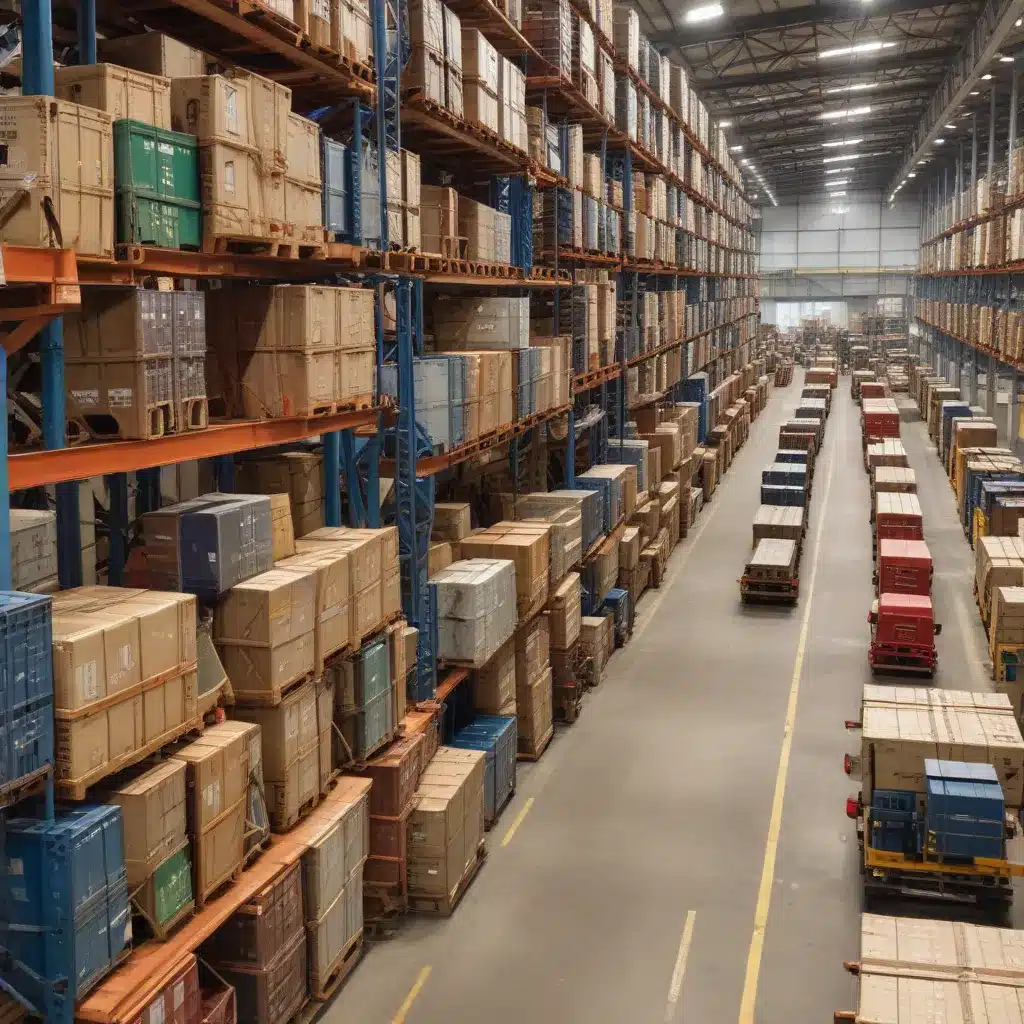
Increasing the Efficiency of the Value-Chain for Non-Manufacturing
The Advantages of Applying Lean Principles to Non-Production Processes
In the ever-evolving business landscape, companies are constantly seeking ways to enhance efficiency and maximize value across their operations. While the principles of lean manufacturing have long been established in the production sector, their application in the non-manufacturing realm presents a significant opportunity for improvement. By adopting lean methodologies, organizations can unlock new levels of productivity, eliminate waste, and deliver greater value to their customers.
Identifying the Causes of Waste in Non-Production Processes
One of the key advantages of implementing lean principles in non-production processes is the ability to identify and mitigate common sources of waste. According to a study by the Fraunhofer Institute, the most prevalent causes of waste in the non-production sphere include:
- Unnecessary Motion: Excessive movements, physical or digital, that do not contribute to the final output.
- Underutilized Talent: Failing to leverage the full potential and expertise of employees.
- Inefficient Processes: Outdated, convoluted, or unnecessarily complex workflows.
- Excessive Inventory: Holding unnecessary levels of supplies, materials, or work-in-progress.
- Unnecessary Transportation: Excessive movement of information, materials, or people.
- Waiting Time: Delays caused by bottlenecks or inefficient handoffs between tasks.
- Defects: Errors, rework, or quality issues that require additional effort to resolve.
By identifying these areas of waste, organizations can implement targeted lean strategies to streamline their non-production processes and unlock new efficiencies.
Measuring and Optimizing Non-Production Processes
Effective measurement and analysis are essential for driving continuous improvement in non-production processes. The challenge, however, lies in the inherent complexity and variability of these processes, which can make them more challenging to quantify and optimize compared to their production counterparts.
To address this, it is crucial to develop a robust performance measurement framework that aligns with the organization’s strategic objectives. This framework should encompass a balanced set of key performance indicators (KPIs) that provide a comprehensive view of the non-production value chain. Some essential KPIs to consider include:
- Cycle Time: The time required to complete a given process or task.
- First-Pass Yield: The percentage of tasks or activities completed correctly the first time.
- Customer Satisfaction: Metrics that reflect the customer’s experience and perception of the service provided.
- Cost-to-Serve: The total cost associated with delivering a product or service to the customer.
- Employee Engagement: Measures that capture the motivation, productivity, and well-being of the non-production workforce.
By carefully selecting and monitoring these KPIs, organizations can identify areas for improvement, implement lean strategies, and continuously optimize their non-production processes to enhance efficiency and deliver greater value to their customers.
Applying Lean Principles to Non-Production Processes
The principles of lean manufacturing, which have proven successful in the production sector, can be effectively adapted and applied to non-production processes. This includes:
- Value Stream Mapping: Mapping out the entire value chain, from the initial customer request to the final delivery, to identify and eliminate non-value-added activities.
- Just-In-Time (JIT) Delivery: Streamlining the flow of information, materials, and resources to meet customer demands in a timely and efficient manner.
- Kaizen Events: Facilitating continuous improvement through regular, collaborative problem-solving sessions that engage employees at all levels.
- Visual Management: Utilizing visual cues and tools to enhance transparency, communication, and process control.
- Standardized Work: Establishing consistent, documented procedures to ensure predictable outcomes and minimize variability.
By embracing these lean principles, organizations can transform their non-production processes, reduce waste, and deliver greater value to their customers. Moreover, the adoption of lean methodologies can foster a culture of continuous improvement, empowering employees to identify and address inefficiencies, ultimately strengthening the organization’s competitive advantage.
Leveraging Technology to Enhance Non-Production Processes
As the digital landscape continues to evolve, organizations have an unprecedented opportunity to leverage technology to streamline and optimize their non-production processes. Tools such as cloud-based collaboration platforms, automation software, and data analytics solutions can play a pivotal role in enhancing efficiency and driving continuous improvement.
For example, cloud-based workflow management systems can facilitate the seamless flow of information and tasks across the non-production value chain, reducing delays and improving visibility. Similarly, robotic process automation (RPA) can automate repetitive, high-volume administrative tasks, freeing up employees to focus on more strategic, value-adding activities.
Furthermore, data analytics and business intelligence tools can provide valuable insights into the performance of non-production processes, enabling data-driven decision-making and targeted optimization efforts. By harnessing these technological capabilities, organizations can enhance their agility, responsiveness, and overall competitiveness in the non-manufacturing arena.
Fostering a Culture of Continuous Improvement
Successful implementation of lean principles in non-production processes requires more than just the adoption of specific tools and techniques. It also necessitates the cultivation of a culture that embraces continuous improvement and empowers employees to drive change.
This cultural transformation begins with strong leadership commitment, which sets the tone for the organization and demonstrates the importance of lean initiatives. By aligning non-production process improvement efforts with the organization’s overall strategic objectives, leaders can ensure that these efforts are consistently prioritized and resourced.
Moreover, engaging employees at all levels and encouraging their active participation is crucial. By empowering non-production staff to identify and address inefficiencies, organizations can tap into a wealth of valuable insights and foster a sense of ownership and accountability.
Through regular training, skills development, and collaborative problem-solving sessions, organizations can build a highly capable and motivated non-production workforce, further enhancing the effectiveness of their lean initiatives.
Conclusion
As businesses across diverse industries strive to remain competitive and meet evolving customer demands, the application of lean principles to non-production processes presents a significant opportunity for improvement. By identifying and eliminating waste, optimizing performance, leveraging technology, and cultivating a culture of continuous improvement, organizations can unlock new levels of efficiency and deliver greater value to their customers.
By embracing this holistic approach to non-production process optimization, forward-thinking companies can position themselves for sustained success in the dynamic, ever-changing business landscape.












